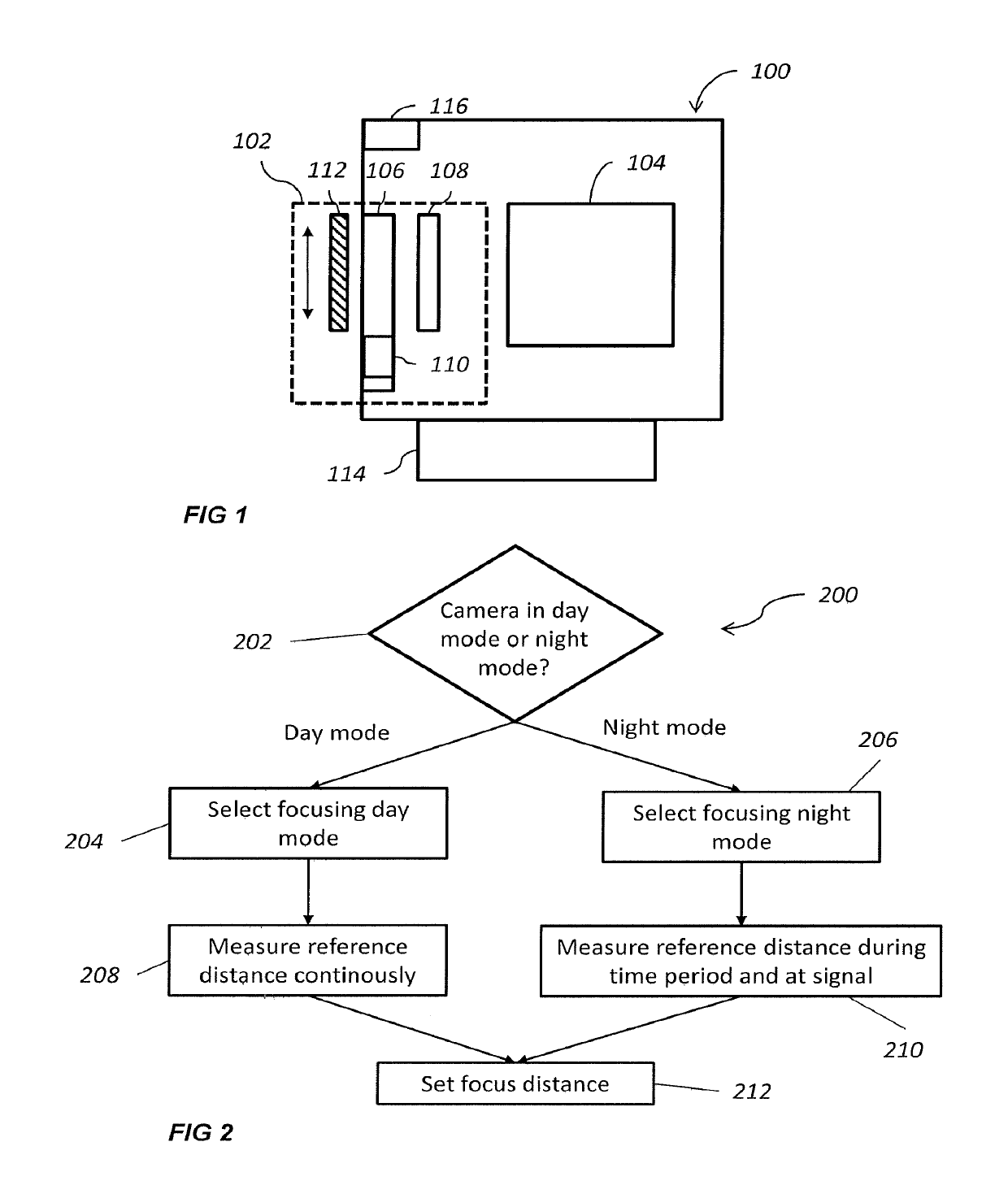Focusing of a camera monitoring a scene
a technology for monitoring scenes and cameras, applied in the field of monitoring cameras, can solve the problems of less efficient passive af methods based on contrast measurement in low light environments, and visible light from the ir laser in images
- Summary
- Abstract
- Description
- Claims
- Application Information
AI Technical Summary
Benefits of technology
Problems solved by technology
Method used
Image
Examples
Embodiment Construction
[0041]The present invention will now be described more fully hereinafter with reference to the accompanying drawings, in which embodiments of the invention are shown. The systems and devices disclosed herein will be described during operation.
[0042]FIG. 1 schematically illustrates a monitoring camera 100. The camera is arranged to monitor a scene and comprises an image capturing unit 102 and an image processing unit 104. Images captured by the image capturing unit 102 are processed by the image processing unit 104. The image processing unit 104 may be arranged to provide noise filtering and other enhancement of the image, as well as performing image analytics, such as video motion detection, and encoding of images. Elements of the image processing unit may be embodied in software or in hardware.
[0043]The image capturing unit 102 comprises a focusing unit 106 and an image sensor 108. The focusing unit comprises an IR laser range meter 110. On or more focusing lenses are also provided...
PUM
 Login to View More
Login to View More Abstract
Description
Claims
Application Information
 Login to View More
Login to View More - R&D
- Intellectual Property
- Life Sciences
- Materials
- Tech Scout
- Unparalleled Data Quality
- Higher Quality Content
- 60% Fewer Hallucinations
Browse by: Latest US Patents, China's latest patents, Technical Efficacy Thesaurus, Application Domain, Technology Topic, Popular Technical Reports.
© 2025 PatSnap. All rights reserved.Legal|Privacy policy|Modern Slavery Act Transparency Statement|Sitemap|About US| Contact US: help@patsnap.com

